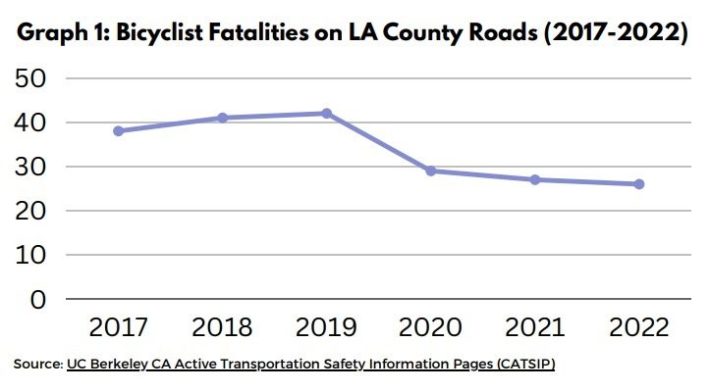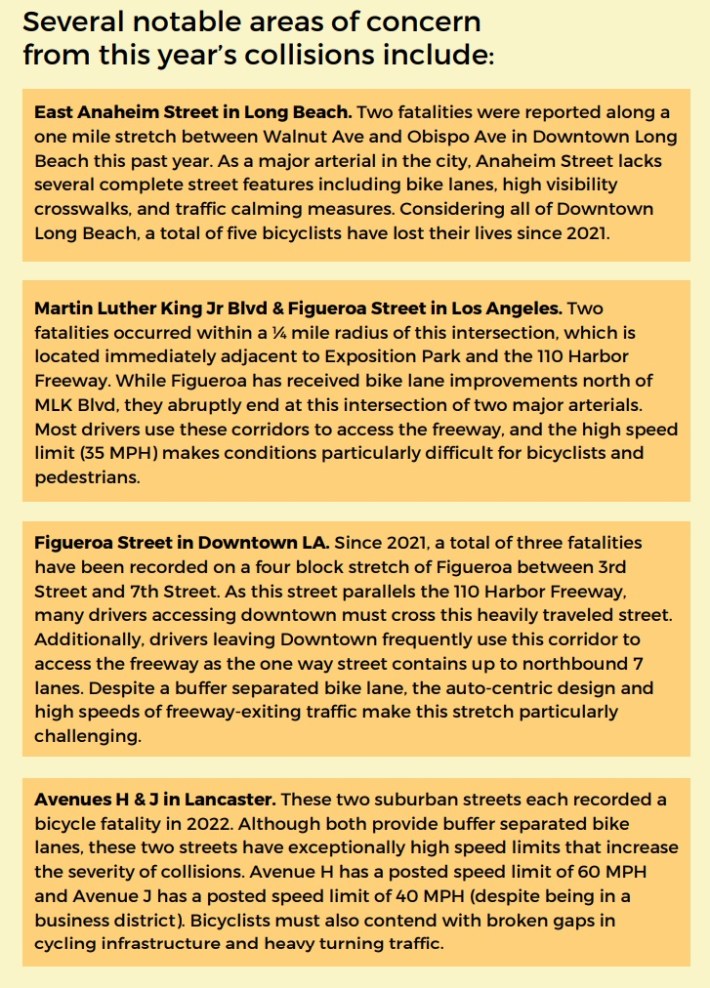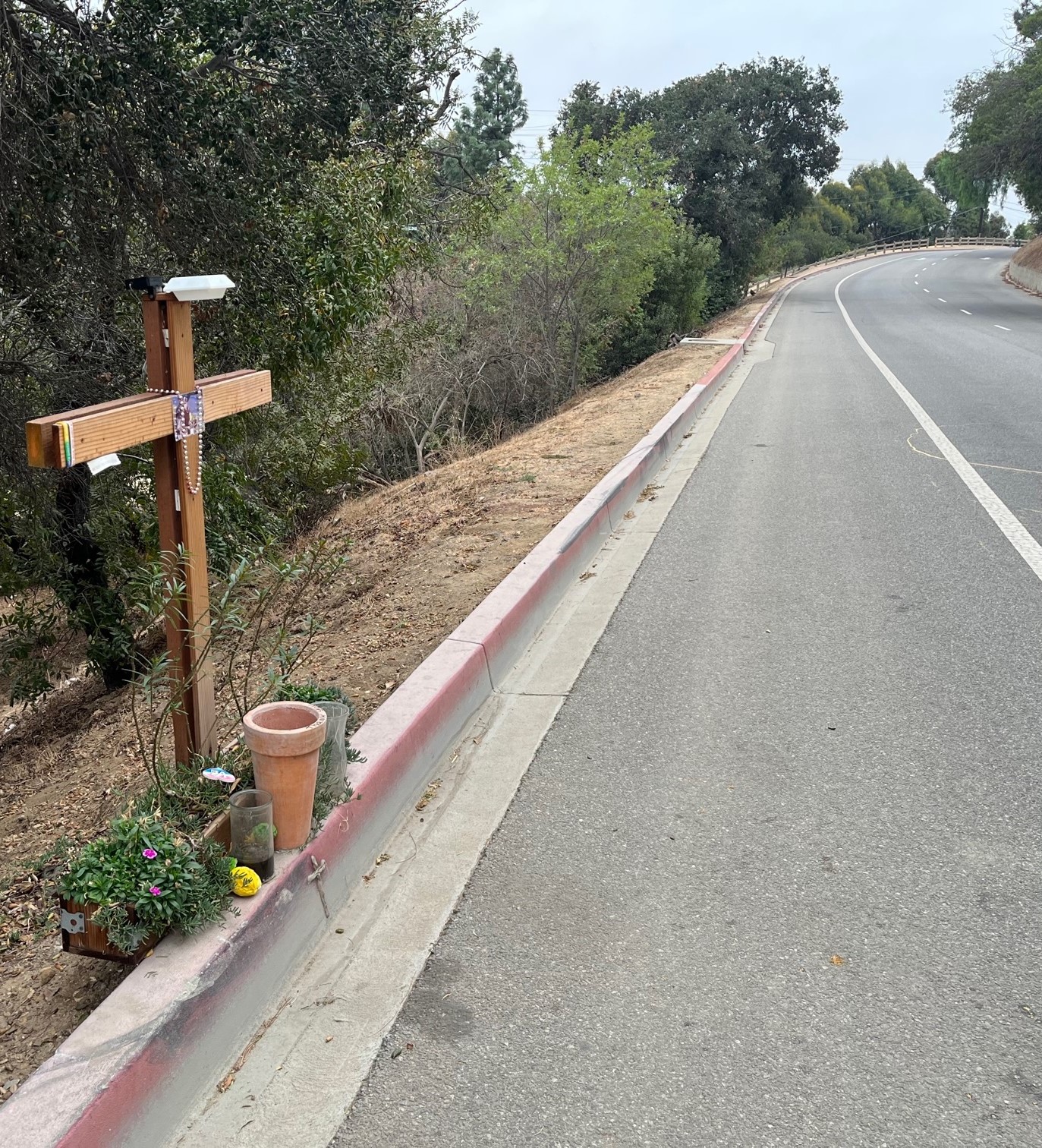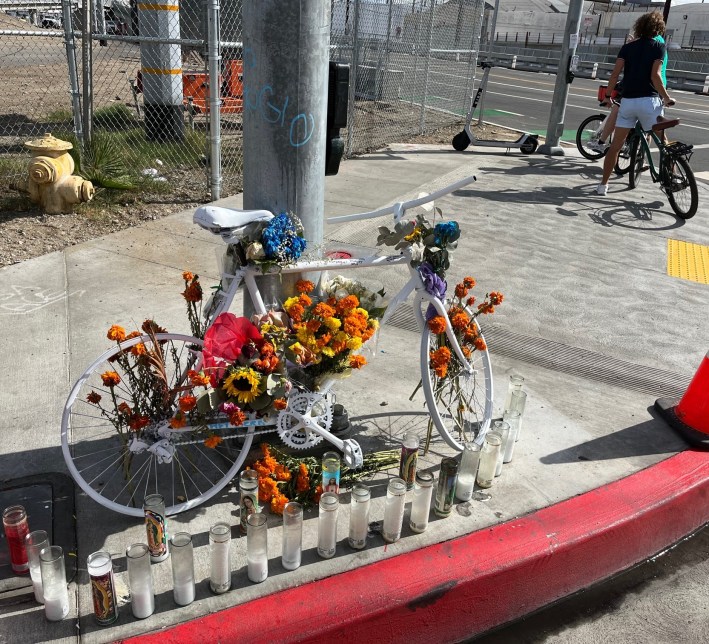Today, BikeLA released its 2023 Bicycle Safety Report, which features a deep dive into the causes of the 26 cyclist fatalities on L.A. County roadways in the 2022 calendar year - and what can be done to prevent future cyclist deaths. BikeLA stresses the need to expand investments in active transportation infrastructure quickly and equitably.
"No matter how conscientious we [cyclists] are on the road," states BikeLA Executive Director Eli Akira Kaufman, "the infrastructure we rely on must do a better job of supporting our freedom to navigate Los Angeles without fearing for our lives." Kaufman stressed that on-the-street reality "is unacceptable for all modalities" and BikeLA is "committed to advocating for the systemic change necessary to make our region bikeable for everyone no matter their zip code.”



BikeLA found that 61 percent of 2022 bicyclist fatalities took place in heavily concentrated low-income, Black and Latinx neighborhoods, with many crashes were also concentrated along heavily-traveled corridors without quality bike infrastructure. BikeLA Deputy Director Kevin Shin adds that, “the communities that need the greatest assistance are located in lower-income POC-dense areas, [which] shows the impact of historic disinvestment and racist policies that lead to a lack of resources resulting in the negative outcomes we experience now.”
The report identifies five factors prevalent in the vast majority of collisions:
- High speed limits: "Excessive speed contributes significantly to the severity of road collisions, especially for those involving bicyclists and pedestrians."
- Excessive travel lanes: 77 percent of fatalities took place on "multi-lane roads, often with three or more lanes in each direction." The report notes that "these major arterials signify to drivers that the road is designed for them, rather than for all users."
- Lack of bike lane infrastructure: "85 percent of fatalities in 2022 occurred on roadways without bike lanes." BikeLA notes that several collisions occurred where bike facilities end, including near the new Sixth Street Viaduct, and the south end of Figueroa Street bike lanes at Martin Luther King Jr. Boulevard. BikeLA stresses that the quality of bicycle infrastructure matters, highlighting the safety of protected lanes and intersections, and calm quiet neighborhood bicycle boulevards.
- Poor street lighting: Over half of all 2022 cyclist fatalities occurred at night. In addition to lighting, BikeLA calls for providing bicyclists with lights, cyclist education, and work to reduce night driver impairment, distraction, and fatigue.
- Concentration in low-income, Black and Latinx neighborhoods: 61 percent of fatal crashes took place in neighborhoods with more than 65 percent people of color. BikeLA urges that "expanding bicycle infrastructure must incorporate and uplift the voices of historically underrepresented communities through measures including participatory budgeting, targeted infrastructure funding, and community education."

BikeLA outlines high level solutions, including reducing speed limits, embracing road diets, expanding cyclist education programs, and more.
Find the full report posted at BikeLA. See also the recent Streets are for Everyone (SAFE) report profiling all 2022 L.A. City traffic fatalities, including cyclists, pedestrians, drivers, etc.








